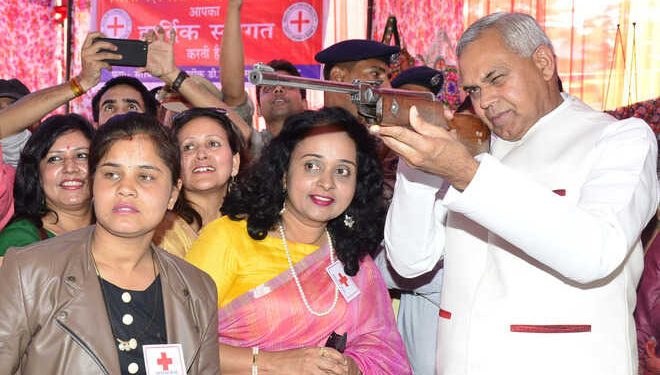Introduction:
In 1920, Mahatma Gandhi founded Gujarat Vidyapeeth, an educational institution with the aim of promoting national education and social reform. Today, the institution continues to uphold these principles and has invited the Governor of Gujarat, Acharya Devvrat, to speak at its upcoming convocation ceremony. This article will delve into the history of Gujarat Vidyapeeth and its significance in India’s educational landscape.
History of Gujarat Vidyapeeth: Mahatma Gandhi founded Gujarat Vidyapeeth on October 18, 1920, in Ahmedabad. He envisioned an educational institution that would promote national education, encourage indigenous industries, and promote social reform. The institution was established as an alternative to the British educational system, which Gandhi saw as promoting a Westernized education that was disconnected from the Indian culture and reality.
Gandhi believed that education should be accessible to all, regardless of their socio-economic background. Therefore, Gujarat Vidyapeeth was open to all, and no fees were charged. The institution aimed to provide education in basic crafts and vocations, as well as in traditional academic subjects. The goal was to create a self-reliant and self-sufficient India, where education was a means to achieve this.
The curriculum at Gujarat Vidyapeeth included subjects like spinning, weaving, agriculture, animal husbandry, and basic healthcare. The institution also emphasized physical education, sports, and yoga. The teaching methodology was based on the principles of Nai Talim or basic education, which was a revolutionary concept in its time. It aimed to create a harmonious relationship between the individual, society, and nature.
Significance of Gujarat Vidyapeeth: Gujarat Vidyapeeth played a significant role in India’s freedom struggle. The institution was a hub of nationalist activity, and many of its students and faculty members were involved in the freedom movement. The curriculum at Gujarat Vidyapeeth was designed to create a sense of patriotism and self-reliance among its students. Students were encouraged to take up social work and participate in activities that promoted national unity and brotherhood.
Gujarat Vidyapeeth also played a significant role in promoting indigenous industries. The institution had a spinning and weaving department, where students were taught the basics of the textile industry. This was in line with Gandhi’s vision of promoting khadi or handspun and handwoven cloth as a means of self-reliance and economic independence.
Today, Gujarat Vidyapeeth continues to promote these principles. The institution has expanded its curriculum to include a range of academic subjects, including science, commerce, and humanities. However, it remains committed to its founding principles of promoting national education and social reform.
Invitation to Governor Acharya Devvrat: In recognition of its contribution to India’s educational landscape, Gujarat Vidyapeeth has invited the Governor of Gujarat, Acharya Devvrat, to speak at its upcoming convocation ceremony. The Governor has accepted the invitation and is expected to speak on the importance of education in promoting social and economic development.
FAQs:
- What is the significance of Gujarat Vidyapeeth in India’s educational landscape? Gujarat Vidyapeeth was founded by Mahatma Gandhi in 1920 with the aim of promoting national education, encouraging indigenous industries, and promoting social reform. The institution played a significant role in India’s freedom struggle and continues to promote these principles today.
- What was the teaching methodology at Gujarat Vidyapeeth? The teaching methodology at Gujarat Vidyapeeth was based on the principles of Nai Talim or basic education, which aimed to create a harmonious relationship between the individual, society, and nature. The curriculum included subjects like spinning, weaving, agriculture, animal husbandry, and basic healthcare
Conclusion:
In conclusion, Gujarat Vidyapeeth is an important institution founded by Mahatma Gandhi in 1920. Its main aim was to provide education to the masses and promote self-reliance. The institution has gone through many ups and downs but has managed to survive and thrive over the years. The invitation extended to Governor Acharya Devvrat is a testament to the institution’s commitment to promoting education and self-reliance. It is hoped that this visit will help the institution further its mission and create more opportunities for students and the community.












